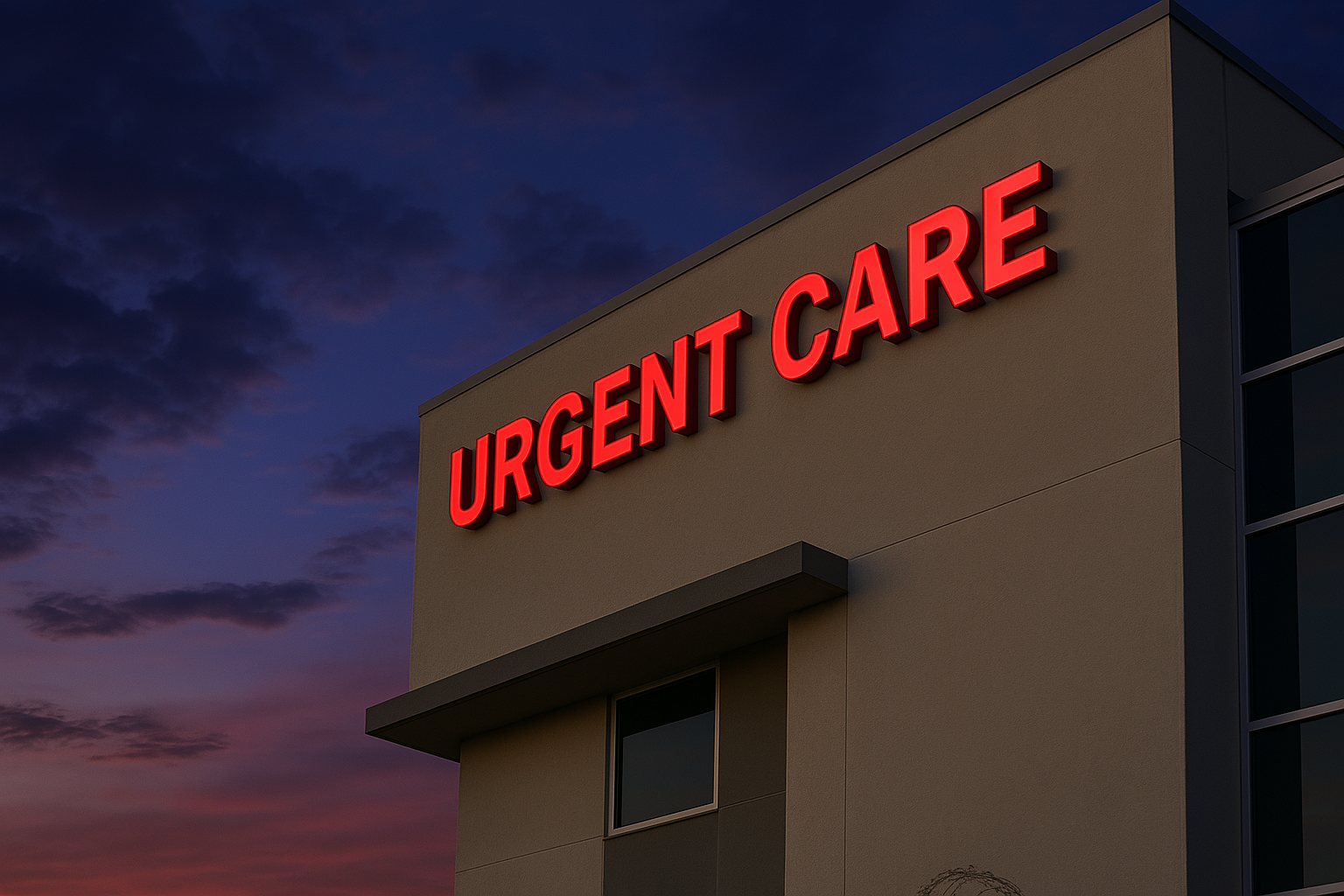In the diverse landscape of commercial real estate, medical office buildings (MOBs) have emerged as a standout investment-grade asset class. Long overlooked in favor of more traditional commercial properties, MOBs continue to demonstrate remarkable resilience, stability, and growth potential, particularly in today’s uncertain economic climate. As we navigate through 2025, the healthcare real estate sector provides investors with a unique opportunity to diversify their portfolios while capitalizing on several undeniable demographic and industry trends.
The Investment-Grade Quality of Medical Office Space
Medical office space has evolved significantly from its traditional perception as a niche asset class. Today, it represents one of the most stable sectors in commercial real estate, with investment-grade qualities that continue to attract institutional capital.
Defining Investment-Grade Real Estate
Investment-grade real estate typically refers to properties that meet specific criteria regarding location, tenant quality, building specifications, and overall stability. Medical office buildings increasingly satisfy these requirements through:
- Stable cash flows: MOBs generally maintain high occupancy rates and consistent rental income streams
- Credit-worthy tenants: Many medical tenants have strong financial profiles, often backed by larger healthcare systems
- Long-term leases: Medical tenants typically sign longer leases (7-10 years) compared to traditional office tenants
- Recession resistance: The healthcare industry demonstrates remarkable stability during economic downturns
- Growing demand drivers: Demographic shifts and healthcare trends support sustained long-term demand
Recent data from 2025 indicates that medical office cap rates have compressed to 5.5-6.5% for prime properties, reflecting the market’s recognition of their investment-grade quality and the growing institutional appetite for this asset class.
Understanding Medical Office Space in 2025
The Evolution of Healthcare Real Estate
Medical office space continues to evolve in response to changing healthcare delivery models. While historically concentrated on or near hospital campuses, today’s MOBs increasingly appear in suburban, retail, and mixed-use settings. This shift reflects the healthcare industry’s growing focus on patient convenience and outpatient care models.
According to 2025 industry data, approximately 65% of new medical office development now occurs in off-campus locations, enabling providers to reach patients closer to where they live and work.
The physical design of MOBs has also transformed significantly. Contemporary medical office buildings feature:
- Flexible clinical spaces that can adapt to diverse medical specialties
- Technology-enabled infrastructure supporting telemedicine and digital health
- Energy-efficient systems reducing operational costs
- Patient-centric designs improving the healthcare experience
- Specialized building systems addressing healthcare-specific requirements
Current Market Size and Growth
The medical office sector continues to expand rapidly. As of 2025, the total U.S. medical office inventory stands at approximately 1.6 billion square feet, with new development adding roughly 25 million square feet annually. Despite this growth, demand continues to outpace supply in most major markets.
Transaction volume in the MOB sector reached $18.2 billion in 2024, representing a 15% increase from the previous year. This growth trajectory is expected to continue through 2025 and beyond, fueled by strong demographic trends and healthcare industry expansion.
The Investment Case for Medical Office Buildings
Several fundamental factors contribute to the investment grade quality of medical office buildings in 2025:
Exceptional Industry Fundamentals
The healthcare sector remains one of America’s most robust industries. Healthcare spending currently represents approximately 19.5% of U.S. GDP and is projected to reach 20.2% by 2030. This sustained growth creates reliable demand for medical office space.
Unlike many commercial sectors vulnerable to economic cycles, healthcare demonstrates remarkable stability. During the 2023 economic slowdown, medical office occupancy rates remained above 92% nationwide, while traditional office occupancy dropped below 82%.
Strong Demographic Tailwinds
The aging of America’s population continues to drive healthcare demand. By 2025, more than 11,000 Baby Boomers turn 65 each day. The average person aged 65+ visits healthcare providers 2-3 times more frequently than younger individuals, creating sustained demand for medical services and associated real estate.
Population migration patterns also favor certain MOB markets. States experiencing significant population growth, particularly in the Sunbelt region, show correspondingly strong demand for healthcare services and facilities.
Stable Tenant Profiles
Medical office tenants typically demonstrate excellent stability. The average medical office lease extends 7-10 years, significantly longer than the 3-5 years common in traditional office space. This lease duration provides investors with predictable cash flows and reduces turnover-related expenses.
Medical tenants also demonstrate exceptional stickiness. Once established in a location, healthcare providers rarely relocate due to the significant costs associated with medical buildouts, established patient bases, and complex regulatory requirements for medical spaces.
Net Lease Advantages
Many medical office properties operate under net lease structures, which offer significant advantages to investors. These arrangements—whether triple net (NNN), double net, or modified gross leases—shift various operating expenses to tenants while providing landlords with stable, predictable income streams.
The Distinct Advantages of Net Leases in Medical Office Investments
Net lease arrangements have become increasingly prevalent in the medical office sector, offering several compelling benefits for investors:
Predictable Returns with Reduced Management Burden
Under triple net (NNN) lease structures, tenants assume responsibility for property taxes, insurance, and maintenance costs, allowing investors to enjoy consistent cash flows without the variability of operating expenses. This arrangement provides:
- Stable, predictable income streams
- Reduced management responsibilities
- Protection against inflation as operating costs rise
- Lower risk profiles compared to other commercial investments
Inflation Protection Through Built-In Escalations
Most medical office net leases include annual rent escalations, typically ranging from 2-3%. These escalations provide natural inflation protection for investors. In 2025’s economic environment, these built-in increases have become increasingly valuable as a hedge against inflationary pressures.
Enhanced Financing Options
The stability of net lease arrangements often translates to more favorable financing terms. Lenders view NNN-leased medical properties as lower-risk investments, frequently offering more attractive interest rates and higher loan-to-value ratios compared to other commercial property types.
According to 2025 lending data, medical office buildings with credit tenants under long-term net leases commonly secure financing with interest rates 30-50 basis points below those available for traditional office properties.
Exit Strategy Advantages
Net-leased medical office buildings typically appeal to a broader range of potential buyers, from individual investors seeking stable passive income to institutional investors building healthcare portfolios. This expanded buyer pool enhances liquidity and potentially supports stronger valuations upon disposition.
Five Critical Considerations for Medical Office Investors
1. Location Dynamics
Location remains paramount in medical office investing. Three critical locational factors influence MOB performance:
Campus Relationships: On-campus or hospital-affiliated properties typically benefit from referral networks and often receive higher insurance reimbursements for procedures. Off-campus “ambulatory care” facilities offer greater convenience and accessibility to patients.
Demographic Patterns: Properties in growing population centers, particularly those with aging demographics, tend to outperform. The Sunbelt states—Arizona, Florida, Texas, and North Carolina—continue to lead in population growth and healthcare demand in 2025.
Accessibility Considerations: Visibility, adequate parking (5+ spaces per 1,000 square feet), and ease of access significantly impact medical office performance. Properties that make healthcare convenient for patients maintain higher occupancy rates and command premium rents.
2. Building Quality and Design
Medical office buildings must meet increasingly sophisticated requirements to remain competitive:
Technological Infrastructure: Modern MOBs require robust technological infrastructure to support electronic medical records, telemedicine capabilities, and advanced diagnostic equipment.
Adaptability: Flexible design supporting multiple medical specialties increases long-term viability. The ability to reconfigure spaces as healthcare delivery models evolve represents a significant advantage.
Efficiency: Contemporary medical office design emphasizes operational efficiency. Properties with higher efficiency ratios (rentable vs. gross square footage) typically generate stronger returns.
Sustainability Features: Energy-efficient systems, sustainable materials, and wellness-oriented designs increasingly influence tenant decisions and property valuations.
3. Tenant Profile Analysis
Understanding the tenant mix remains crucial for medical office investors:
Specialty Considerations: Not all medical specialties present equal investment profiles. Specialties with higher barriers to entry (e.g., imaging centers, surgery centers) generally offer greater stability than those with lower barriers (e.g., primary care, urgent care).
Credit Strength: Tenant financial stability significantly impacts investment risk. Hospital-affiliated practices or those backed by private equity generally present stronger credit profiles than independent physician groups.
Lease Structures: Evaluating lease terms, including duration, escalation provisions, and expense responsibilities, remains essential for accurate underwriting.
4. Market Fundamentals
Local healthcare market dynamics significantly influence investment performance:
Provider Landscape: Markets dominated by a few large health systems may present different risk profiles than fragmented markets with numerous independent providers.
Regulatory Environment: Certificate of need (CON) requirements and other regulatory factors can significantly impact healthcare development and competition.
Insurance Dynamics: Local insurance market conditions, including reimbursement rates and payor mix, influence provider financial stability.
5. Capital Expenditure Planning
Medical office buildings require specialized capital planning:
Building Systems: MEP systems in healthcare facilities typically require more frequent updates and may have shorter useful lives compared to traditional offices.
Technological Upgrades: Budgeting for technological infrastructure improvements remains essential as healthcare technology continues to evolve rapidly.
Accessibility Enhancements: Ongoing investments in ADA compliance and patient accessibility features represent recurring capital needs.
The Resilience of Medical Office Investments
The medical office sector has consistently demonstrated exceptional resilience through economic cycles, including the COVID-19 pandemic and subsequent inflationary period. This track record continues to attract investment capital seeking stability with growth potential.
Pandemic Performance
During the COVID-19 pandemic, medical office buildings demonstrated remarkable stability. According to industry data:
- Rent collection rates remained above 95% even during peak pandemic disruption
- Average MOB rents increased 5.5% in 2020 despite broader economic challenges
- Vacancy rates remained below 10% nationally throughout the pandemic period
This performance contrasted sharply with other commercial property types, many of which experienced significant distress during the same period.
Post-Pandemic Strength
The medical office sector has demonstrated continued strength during the post-pandemic recovery:
- Rental rate growth averaging 3.8% annually since 2021
- Cap rate compression reflecting increased institutional demand
- Development pipelines expanding to meet growing healthcare needs
- Strong absorption of new inventory in most major markets
This consistent performance has positioned medical office buildings as an investment-grade asset class capable of delivering stable returns with moderate growth potential.
The Future of Medical Office Investments
Several trends will likely shape the medical office investment landscape moving forward:
Changing Healthcare Delivery Models
The continued shift toward outpatient care models drives demand for well-located medical office space. Procedures once performed exclusively in hospitals increasingly migrate to ambulatory settings, creating requirements for specialized facilities.
The integration of telemedicine with in-person care also influences facility design, with hybrid care models requiring flexible spaces supporting both digital and physical patient interactions.
Retail Healthcare Expansion
The “MedTail” phenomenon—medical uses occupying traditional retail locations—continues to accelerate. Healthcare providers increasingly recognize the value of retail locations’ visibility, parking, and convenience. This trend creates opportunities for investors to repurpose struggling retail assets for medical use.
ESG Considerations
Environmental, Social, and Governance (ESG) factors increasingly influence healthcare real estate decisions. Medical office buildings with sustainable features, wellness-oriented designs, and strong community connections command premium valuations and attract quality tenants.
Conclusion: Medical Office as a Core Investment-Grade Asset
In 2025, medical office buildings represent one of commercial real estate’s most compelling investment-grade opportunities. Their combination of healthcare industry stability, strong demographic tailwinds, and excellent tenant retention creates a foundation for reliable performance.
The sector’s demonstrated resilience through economic disruptions, including the COVID-19 pandemic and subsequent inflationary period, highlights its defensive qualities. Meanwhile, evolving healthcare delivery models and strong demographic trends support continued growth.
For investors seeking stable cash flows with moderate growth potential, medical office buildings offer an increasingly attractive alternative to traditional commercial property types. As institutional capital continues to recognize these qualities, medical office assets will likely remain a cornerstone of investment-grade real estate portfolios for years to come.



